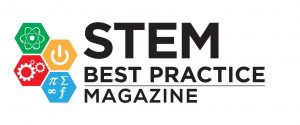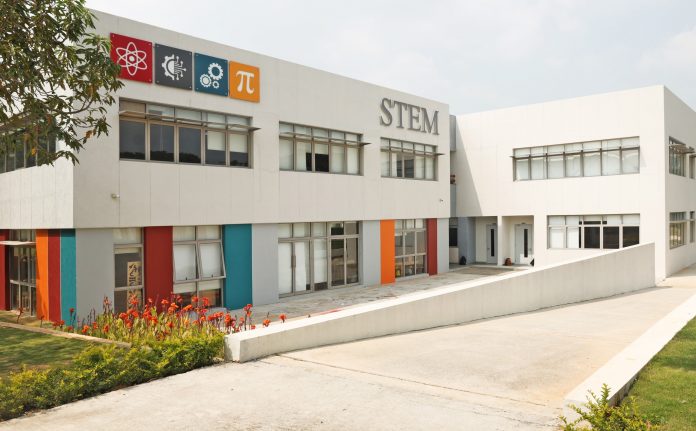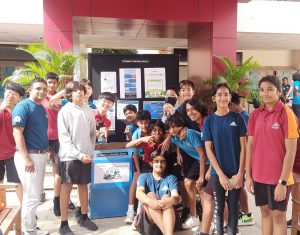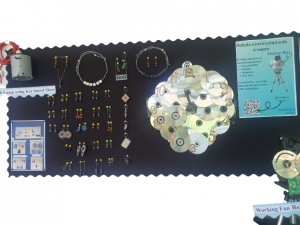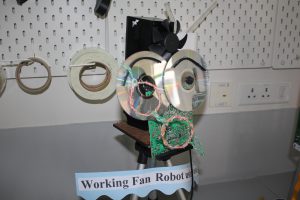Understanding the e-waste Challenge
In a society where technology perme- ates nearly every aspect of our lives, the management and consequences of discarded electronics pose a challenge that deserves our immediate attention. Considering this our learners upcycle the e-Waste by designing and develop- ing various utility and aesthetic values. At Stone Hills International School, we’ve taken significant steps to manage e-waste responsibly and set an example for a sustainable future.
What is e-waste?
E-waste, also known as electronic waste, refers to discarded electronic devices that have reached the end of their useful life or are no longer want- ed or needed. It includes a wide range of electronic items, such as computers, laptops, mobile phones, televisions, refrigerators, washing machines, print- ers, and other household and office appliances.
These devices contain toxic and haz- ardous materials such as lead, mercury, and cadmium, which pose significant risks to human health and the environ- ment.
The increasing consumption of elec- tronic devices, rapid technological advancements, and shorter product lifecycles contribute to the growing e-waste problem globally. Electronic
waste, or e-waste, is a growing problem in today’s society. With the constant advances in technology, it is estimat- ed that the amount of electronic waste generated will reach 74 million metric tons by 2030. This alarming statistic highlights the need for proper e-waste management to prevent environmental hazards which in turn develops health hazards.
Impacts of e-waste
Improper disposal of e-waste can lead to air and water pollution, soil contam- ination. It also
creates health problems for workers who are involved in its disposal. Prop- er e-waste management is crucial for minimizing the environmental and health impacts of electronic waste.
The most effective approach to e-waste management is the “reduce, reuse,
and recycle” strategy. This approach involves reducing the amount of elec- tronic waste generated by extending the life of electronic devices through repair and maintenance.
Additionally, recycling e-waste can recover valuable materials such as gold, silver, and copper, reducing the de- mand for new raw materials and con- serving natural resources. Last but not the least reusing the electronic waste to create utility and aesthetic products.
Considering these threats of e-waste an awareness and collection campaign was started at our school Stonehill Interna- tional, Bangalore(India). Students from MYP2 developed posters and started the campaign in the school. They vis- ited most of the classrooms across the segments to educate every individual about the impacts of e-waste and to request them to donate e-waste.
Project Overview
The Challenge
The idea behind this campaign was to promote STEM(Science, Technology, Engineering, and Mathematics) edu- cation in several ways.E-waste projects create awareness about the environ- mental impact of electronic waste.
Students can learn about the harmful effects of improper disposal, such as pollution, resource depletion, and health hazards. This knowledge can motivate them to explore environmentally sustainable solutions through STEM fields.
Project Goals
- Identify the objectives of the eWaste project
- Ensure that objectives are specific and measurable
- Importantly, how to reuse this to align with solutions
Our Project Execution
Our campaign helped us to run our e-waste collection drive successfully where we are able to collect various
items like old laptops, printers, batter- ies, headphones, mobiles, and many more.
Here is the list showing the details about the e-waste collected by our enthusiastic learners in the duration of ten days.
Item Quantity
- Printers 2
- Logitech Laptops 3
- Robo Cleaner 1
- Monitor 1
- LAN Cable 50
- HDMI Cable 20
- Headphones 3
- Old Digital camera 1
- Keyboards 4
- Old mobile 10
- Bulb 10
- iPad 2
- iPod 1
- Medical Device 1
- Walky Talky 1
- Telephone 1
- Extension box 1
- Iron Box 1
- Apple keyboard 1
- Tripod Stand 1
- Camera 1
- SPy Camera 1
- Power Bank 1
After this collection drive we segregated the waste as per the grade levels and motivated our learners to come up with plans to showcase their creative ideas to reuse the E-Waste.
These E-waste projects motivated collaborative learning as learners collaborated in groups to disassemble and analyze the electronic components and circuits. Learners brainstormed their thoughts with the Digital design facilitator before implementing their ide- ations into solutions. Our enthusiastic Digital design learners of MYP2 and MYP4 came up with innovative designs and finally implemented the ideas by reusing the E-Waste collected.
MYP2 and MYP4 learners collaborated and decided to reuse the waste to develop multiple products. These collaborative learning fosters communication, leadership, and teamwork skills, which are crucial for success in STEM fields.
Our MYP4 Digital Design students participated in two different competitions and presented their products. They won first prize in one of the inter- school competitions. Motivated by this, they wanted to spread the message further about their project and they participated in the Creative Marathon organised by Full Sail University, Flori- da. Our designers got honourable mention for their entry in Creative Marathon.
Community Engagement is a very important aspect for every IB learn- er. Considering this our organisation supported the learners to organise the display of the products developed using these e-waste during the end-of- school celebration week. Our Stonehill learners `innovated and created beau- tiful products using e-waste like Desk organisers, pen holders, key rings, Room lamp, jewellery and many more.
Our community strongly believe in conceptual and practical learning for our learners. Considering this we are planning to integrate this project with different subjects like science, design, Individuals and Societies and even Maths. Teachers will design lesson plans that incorporate e-waste top- ics, ensuring a seamless integration of hands-on experiences with theoretical concepts.
Next Steps
Moving further our e-waste projects will be extended beyond the school level by involving the local community to purchase the products or to sup- port our e-waste project at school. This community engagement will help stu- dents to develop communication skills, marketing skills and to develop a sense of social responsibility.
This is a great initiative taken by Stonehill International School, Bangalore that will not only help to spread aware- ness about the impacts of e-waste but also to promote e-waste donation that can be reused in a creative and inno- vative manner. This will help to reduce the landfills with the toxic, reduce wa- ter pollution, and reduce soil contam- ination which in turn will reduce the health problems for workers involved in its disposal.
Our community strongly believe in conceptual and practical learning for our learners. Considering this we are planning to integrate this project with different subjects like science, design, Individuals and Societies and even Maths. Teachers will design lesson plans that incorporate e-waste top- ics, ensuring a seamless integration of hands-on experiences with theoretical concepts.
By Dr. Chetna Kachhwaha


